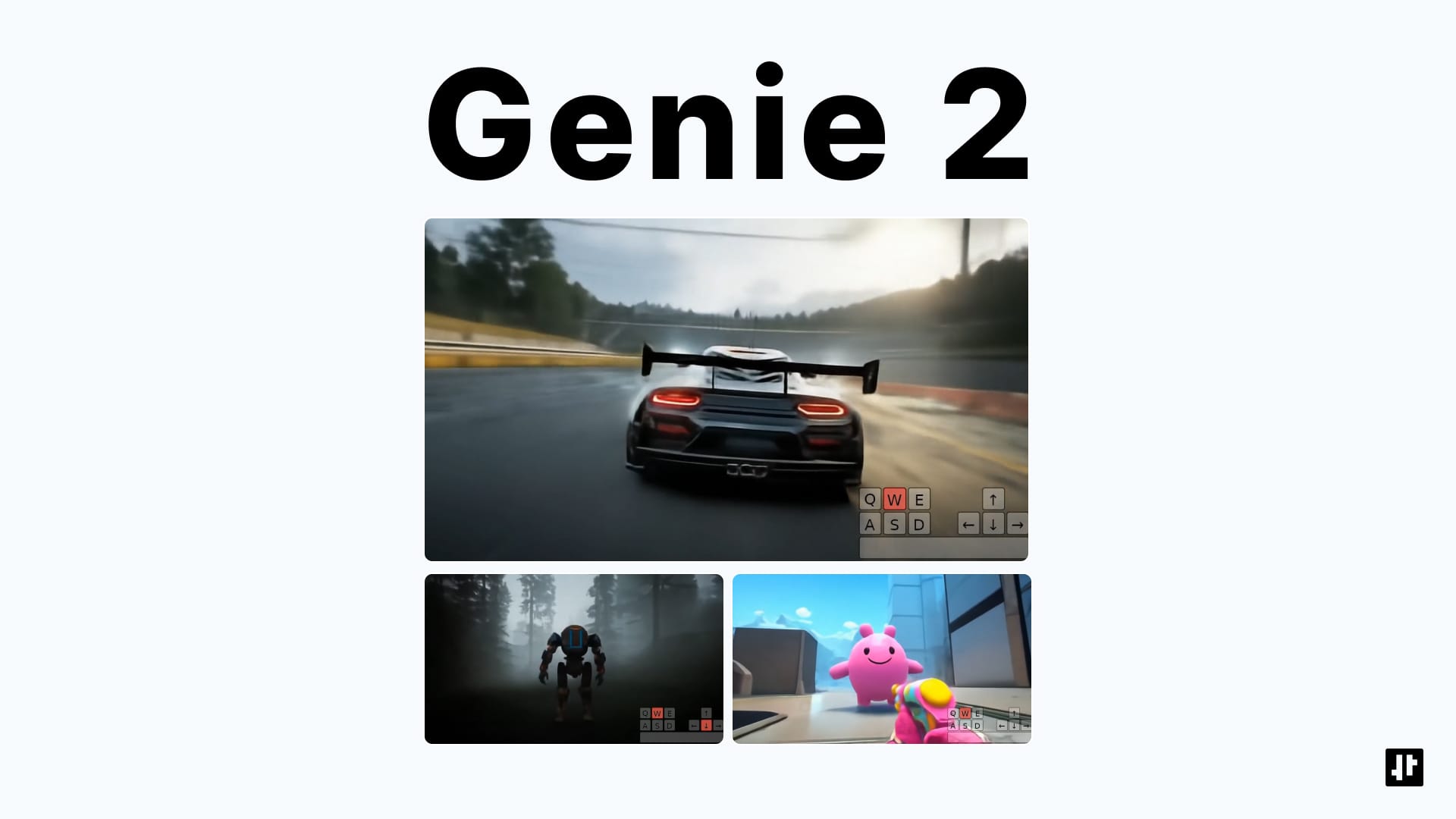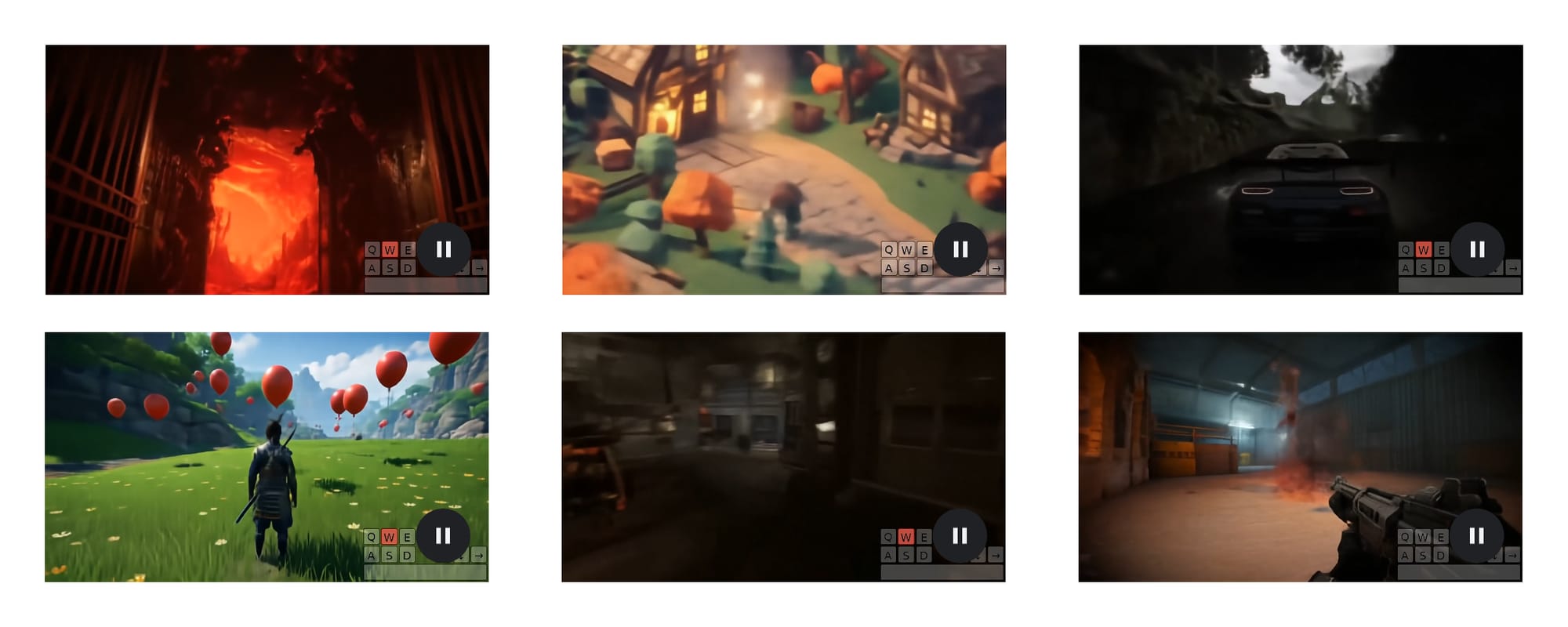Genie 2's Potential Impacts on the Gaming Industry
Genie 2 impacts gaming by generating endless 3D worlds from single images, enabling rapid prototyping, AI testing, and dynamic, interactive experiences.

The video game industry is no stranger to innovation and reinvention. From the earliest pixelated experiments to the sprawling, photorealistic virtual worlds of today, the medium’s evolution has been shaped by technological breakthroughs. Now, Genie 2, a newly introduced large-scale foundation world model by Google DeepMind, promises to bring about an immersive shift that could redefine the entire landscape of game development, player experiences, and AI-driven gameplay.
From Finite to Infinite Worlds
For decades, game creators have balanced artistic vision with the constraints of time, budget, and human labor. Traditional world-building is a very complex process: concept artists and level designers craft environments by hand, developers implement complex behaviors and interactions, and QA testers ensure gameplay stability. Genie 2 challenges this framework by generating fully interactive 3D environments from a single prompt image. Through a form of large-scale generative modeling, this tool can produce effectively endless, playable worlds, each with its own characters, topographies, interactable objects, and even natural phenomena like dynamic weather, smoke, and reflections.
This opens the door to a new kind of creativity. Instead of slow-pace modeling every tree, building, or character, developers can focus on conceptual direction, feeding Genie 2 an image or description that encapsulates the feel of an environment, and rely on the model to generate a corresponding playable space. These environments can feature long-horizon memory, meaning the world remains logically consistent as players explore, and can also model physics, character animations, and even non-player characters (NPCs) that behave and interact in sensible ways.
Accelerating Prototyping and Iteration
One of the most time-consuming aspects of game development is prototyping: building early versions of environments, mechanics, and scenarios to test ideas. Genie 2 dramatically reduces this burden. Imagine an indie developer who envisions a surreal, floating city dotted with glowing foliage and mechanical creatures. Instead of hiring a large team or spending months producing concept art, greybox levels, and complex behavior trees, they can simply provide a concept image to Genie 2. Within minutes, they can “step into” a new world, iterating on ideas at a pace previously unimaginable.
This rapid prototyping power doesn’t just help established studios; it also empowers smaller teams and individual creators who may lack large budgets or specialized technical skills. By lowering these barriers, Genie 2 democratizes the creation of high-quality, highly responsive virtual spaces. As a result, we may see an influx of fresh, diverse game experiences that challenge conventional genres and aesthetics.

Training and Testing AI Agents in Limitless Environments
For many developers, designing game AI has been a painstaking craft. Traditionally, training AI agents (be they enemies, companions, or environmental NPCs) to behave intelligently and adapt to players’ actions required large sets of handcrafted scenarios. Genie 2’s approach to world-building allows AI agents to be tested in a limitless curriculum of environments. Agents can be trained in an ever-shifting series of landscapes, conditions, and contexts, ensuring they become more robust and versatile over time.
Beyond game design, Genie 2 offers a powerful tool for AI researchers who wish to measure and improve their algorithms. Dynamic environments can simulate complex tasks: navigating mazes, interpreting instructions to open doors of varying colors, or handling intricate puzzles. These AI agents gain resilience from being challenged by perpetually novel scenarios. For players, it can translate into more believable, adaptive game worlds where enemies learn from player strategies and allies react intelligently to unexpected situations.
Empowering Artists and Designers With a New Creative Workflow
Genie 2 is a bridge between artistic vision and playable reality. Concept artists can now see their 2D sketches transformed into playable 3D environments in real time. By providing a visual prompt, they watch as Genie 2 interprets the scene, be it a dreamy jungle temple or a neon-lit cybernetic metropolis, and builds a consistent, explorable world. This immediate feedback loop allows for rapid style experimentation and creative iteration that can inform and refine a game’s aesthetic identity.
For studios working with licensed properties or unique art directions, Genie 2 can translate concept art styles and thematic motifs directly into gameplay environments. This expands the boundaries of what is possible, enabling rich stylistic homages, intriguing mashups, or entirely new artistic frontiers. Over time, we could see the gaming medium diversify even further as Genie 2 makes it easier to create everything from historically accurate reconstructions to surreal flights of fancy.
Rethinking the Economics of Game Development
Generating vast environments on the fly could change the economics of game production. Instead of teams spending years on handcrafted content, studios might leverage Genie 2 to keep their worlds fresh long after launch. Procedurally generated seasonal events, dynamically evolving landscapes, and new story quests could appear in real time without massive content patches. For live-service games, this offers a more sustainable model of continual engagement. Developers can surprise players with fresh, dynamic content without re-inventing their production pipelines every few months.
Moreover, Genie 2 could lower the initial investment required to produce a compelling game world, allowing smaller studios to compete with industry giants. This in turn could foster a more vibrant, competitive marketplace, one driven by imaginative ideas rather than just big budgets and large development teams.
New Player Experiences and Beyond
For players, Genie 2’s capabilities promise never-ending novelty. The concept of a game that never feels “exhausted”, where new experiences can be conjured on demand, is tantalizing. Players might request certain types of biomes, architectural styles, or challenges, and see them materialize instantly. It’s a move toward a future where the line between developer and player blurs, enabling communities to co-create environments and stories together.
Beyond gaming, the foundational technology behind Genie 2 could influence industries such as film, virtual reality training simulations, or education. Interactive experiences that once required expensive studios and massive modeling projects might be prototyped and brought to life in seconds, reshaping how we conceive of virtual experiences as a whole.
A Glimpse Into the Future
Genie 2 represents a remarkable technical achievement and a harbinger of what lies ahead. While still in early stages, the model demonstrates emergent capabilities in simulating physics, character behavior, lighting, and more. As the technology advances, we can expect even greater control, consistency, and fidelity.
Its impact on the video game industry, in particular, could be revolutionary. By untethering developers from the limitations of manual environment creation, Genie 2 invites a future of boundless creativity, more intelligent AI, and sustainable content generation. In doing so, it may help usher in a new golden age of gaming, one defined by infinite worlds, player-driven exploration, and unprecedented artistic freedom.